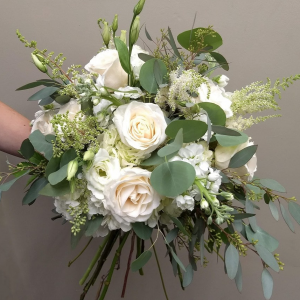Our ability to respond quickly to visual stimuli is crucial in daily life, from avoiding obstacles while walking to reacting swiftly to traffic signals. The human brain processes visual information rapidly, and certain visual cues—particularly bright colors—can significantly enhance reaction times. Understanding the science behind this phenomenon can help us design safer environments and more engaging visual experiences.
Table of Contents
- The Power of Visual Stimuli in Human Reaction Times
- The Neuroscience Behind Color Perception and Reaction Speed
- Why Bright Colors Elicit Faster Responses
- Emotional and Psychological Factors Influencing Reaction
- The Tumble Mechanics and Visual Aftereffects: An Analogy
- The Mathematics of Sensory Processing and Response Time
- Practical Applications: Designing for Faster Reactions
- Non-Obvious Factors Affecting Visual Response
- Future Directions: Enhancing Reaction Speed Through Color and Design
- Conclusion: Harnessing Bright Colors to Improve Human Response
The Power of Visual Stimuli in Human Reaction Times
The human brain is remarkably efficient at processing visual information, often within milliseconds. When a visual stimulus appears, it is first detected by photoreceptor cells in the retina, which convert light into neural signals. These signals travel via the optic nerve to the visual cortex in the brain’s occipital lobe, where they are interpreted. Rapid reaction times are vital in situations like crossing the street or responding to emergency signals, where milliseconds can be the difference between safety and danger. Bright colors serve as a powerful cue because they stand out against backgrounds, immediately capturing attention and triggering faster responses.
The Neuroscience Behind Color Perception and Reaction Speed
Color perception begins when light hits the cone cells in our retina, which are sensitive to different wavelengths corresponding to various colors. These signals are processed in the visual cortex, where the brain deciphers hue, saturation, and luminance. Notably, high contrast and saturation amplify neural responses, making bright colors more attention-grabbing. Research shows that intense color stimuli activate neural pathways more robustly, leading to quicker initiation of motor responses. For example, a vivid red stop sign or a bright yellow caution light can elicit faster reactions than duller hues, thanks to their heightened neural activation levels.
Why Bright Colors Elicit Faster Responses
Evolutionary Perspective: Survival Advantages of Bright Signals
Throughout evolution, humans and other animals have developed heightened sensitivity to bright, conspicuous signals, which often indicate danger or opportunity. Bright colors in nature—such as ripe fruits, poisonous frogs, or warning markings—serve as cues for quick action. This evolutionary bias means our brains are wired to prioritize processing bright stimuli, enabling faster reactions that could be crucial for survival.
Impact of High Luminance on Reaction Times
High luminance, or brightness, enhances the salience of visual stimuli. Studies demonstrate that luminance contrast significantly reduces reaction times. For instance, a bright red object against a dark background is detected faster than a duller shade. This effect is rooted in the way our visual system is tuned to notice luminance differences, which are processed in the magnocellular pathway responsible for motion detection and rapid responses.
Examples from Nature and Behavioral Effects
Bright colors in nature, such as the vivid plumage of peacocks or the striking coloration of certain insects, often serve as signals for mating or warning predators. These natural examples reinforce the behavioral tendency to react swiftly to vibrant stimuli. In human contexts, traffic lights and warning signs use bright reds, yellows, and greens to ensure immediate recognition and response, illustrating a universal principle linking color brightness to reaction speed.
Emotional and Psychological Factors Influencing Reaction
Colors do more than just catch the eye—they influence our emotions and arousal levels. Psychological research indicates that warm, vibrant colors like red and orange increase alertness and excitement, priming the brain for action. This is partly due to the release of endorphins and neurotransmitters that elevate mood and readiness. For example, “Sweet Rush Bonanza” uses vivid, energetic visuals to stimulate players’ attention and enthusiasm, demonstrating how vibrant designs can make experiences more engaging and prompt quicker responses.
“Vibrant colors not only attract our gaze but also trigger emotional states that enhance our responsiveness.” — Neuroscience Insights
The Tumble Mechanics and Visual Aftereffects: An Analogy
The phenomenon known as the Tetris effect—where repetitive visual patterns influence perception—illustrates how visual stimuli can prime our responses. When we repeatedly see bright colors or patterns, our brains develop a kind of ‘muscle memory’ in perception, making us more responsive to similar stimuli later. Additionally, afterimages—visual persistence after exposure—can enhance reaction speeds. For example, staring at a bright object may leave a residual image that primes quick recognition of similar stimuli afterward.
In everyday life, this means that environments saturated with vibrant colors can condition us to respond faster to related signals, much like how the engaging visuals in games like “Sweet Rush Bonanza” keep players alert and responsive.
The Mathematics of Sensory Processing and Response Time
| Concept | Explanation |
|---|---|
| Number 128 (2^7) | Represents the number of bits in neural coding for sensory information, reflecting the brain’s capacity for structured, efficient processing. |
| Structured Complexity | Organizing stimuli with specific patterns enhances processing speed, similar to musical octaves providing a framework for understanding sound intervals. |
These mathematical principles suggest that well-structured visual stimuli, such as bright, contrasting colors, are processed more efficiently, leading to faster responses. The analogy to musical octaves—where a simple, repeating pattern governs perception—highlights how order and complexity influence brain processing.
Practical Applications: Designing for Faster Reactions
Designers leverage the power of bright colors in various settings to prompt quick responses. Traffic signals use red, yellow, and green to communicate urgency and safety instantly. UI designers incorporate vibrant call-to-action buttons to guide user interactions efficiently. For example, the engaging visuals of “Sweet Rush Bonanza” demonstrate how vibrant schemes can capture attention and encourage immediate engagement.
To optimize response speed, consider using high-contrast color combinations, such as red on white or yellow on black, which are proven to be most effective in alert signals. Additionally, integrating psychological principles—like warm, energetic hues—can make environments more stimulating and responsive.
Non-Obvious Factors Affecting Visual Response
Individual differences play a role: some people are more sensitive to certain colors, influenced by genetics or cultural backgrounds. Environmental factors such as lighting conditions and background complexity also impact perception. Moreover, multisensory integration—where visual stimuli interact with sounds or tactile cues—can either enhance or hinder response times, emphasizing the importance of context in design.
Future Directions: Enhancing Reaction Speed Through Color and Design
Emerging technologies, like augmented reality and personalized visual stimuli, hold promise for tailoring alert systems to individual neural profiles. Advances in neuroscience research continue to uncover how specific color patterns can optimize response times, opening avenues for adaptive environments and customized interfaces. Collaboration between neuroscientists, psychologists, and designers will be key to developing next-generation safety and engagement tools.
Conclusion: Harnessing Bright Colors to Improve Human Response
In summary, bright colors trigger faster reactions due to their neural, evolutionary, and psychological advantages. They activate our visual pathways more robustly, evoke emotional arousal, and are deeply rooted in survival instincts. By integrating scientific insights into practical design—whether in safety signage, user interfaces, or marketing campaigns—we can enhance responsiveness and safety. Modern examples like “Sweet Rush Bonanza” exemplify how vibrant visuals continue to influence engagement and reaction speed in contemporary settings. Embracing these principles helps create environments that are not only visually appealing but also fundamentally smarter and safer.

